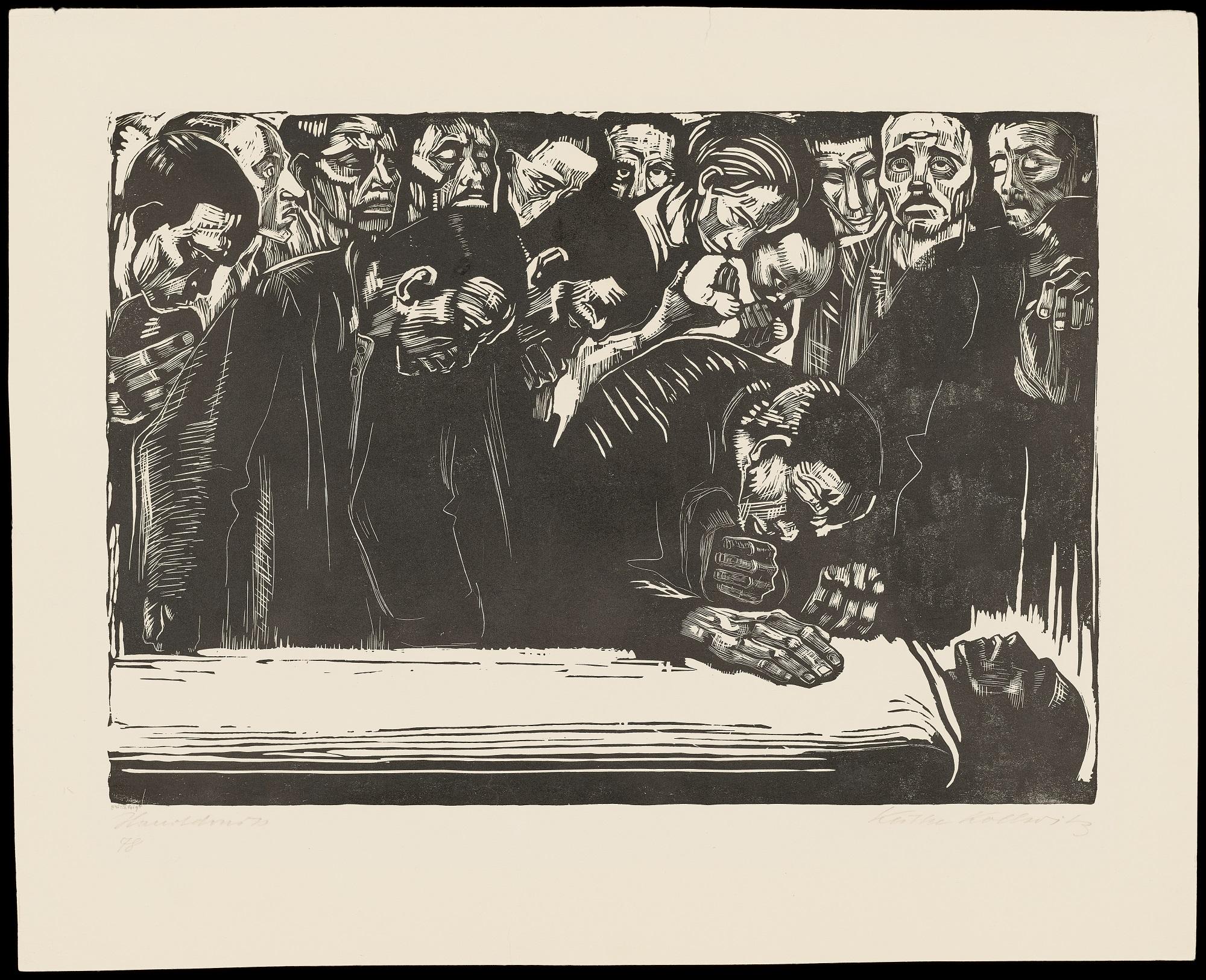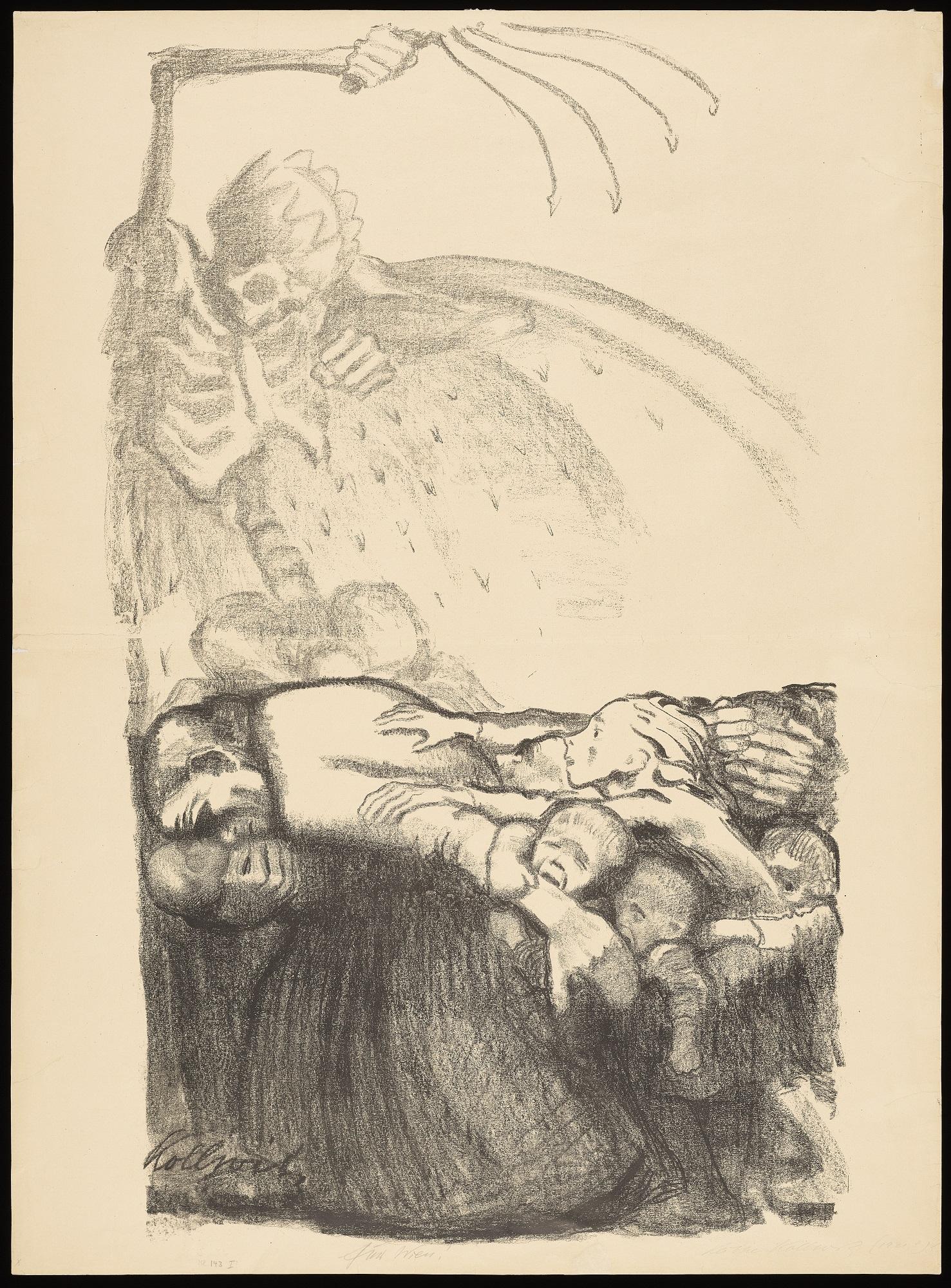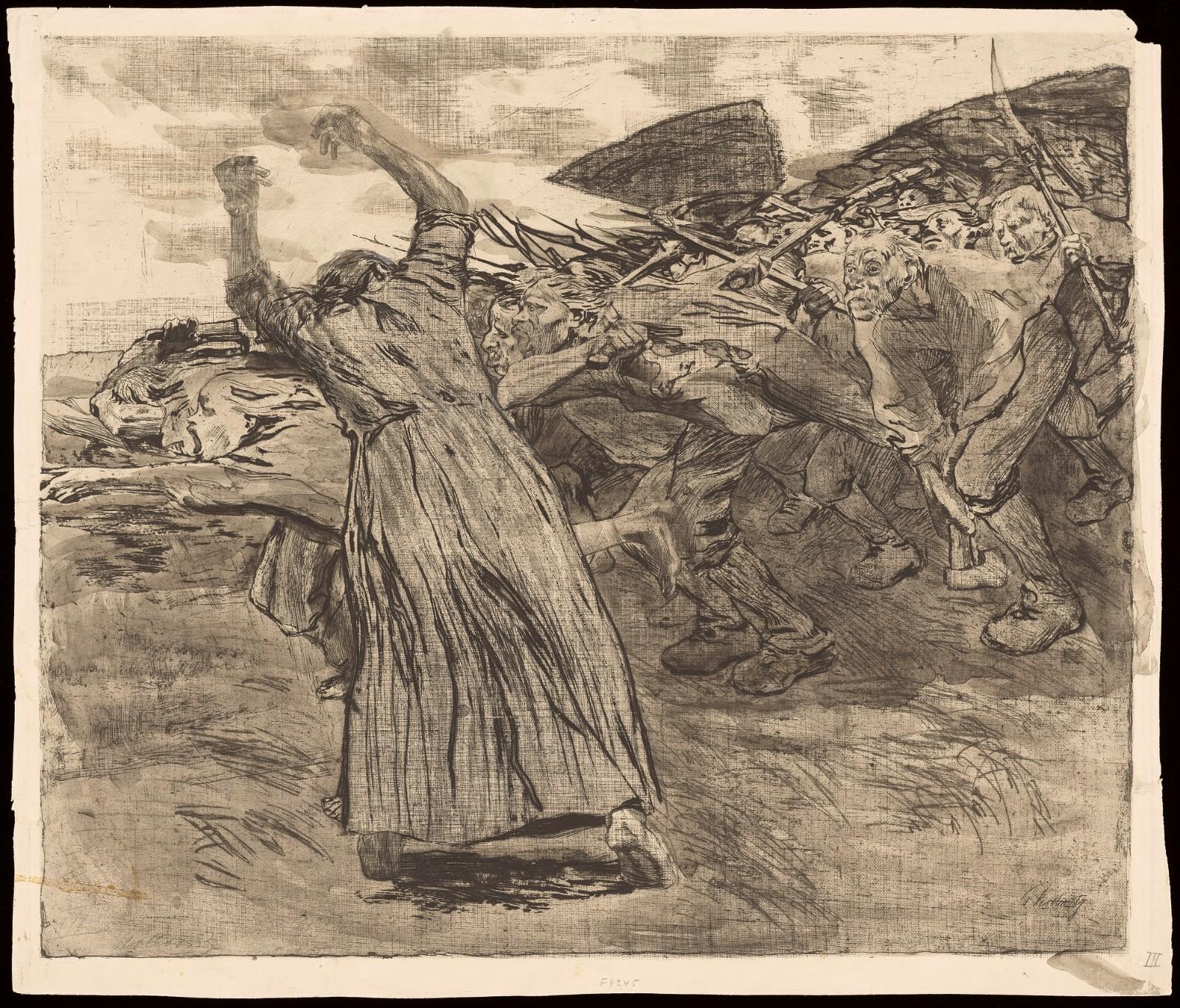“Uniting a passion for social justice with a commitment to artistic excellence, Kollwitz’s prodigious oeuvre has a remarkable capacity to engage and inspire audiences in the 21st century,” said Mary Miller, director of the Getty Research Institute. “For its significant depth and scope, the Dr. Richard A. Simms Collection at the Getty Research Institute is an unparalleled resource for the study and appreciation of this influential artist. This exhibition offers compelling, fresh insights into Kollwitz’s accomplishments as a printmaker and activist, presenting works that have seldom been on public display.”
Käthe Kollwitz: Prints, Process, Politics features etchings, woodcuts, and lithographs from every phase of the artist’s career, alongside related preparatory drawings, proofs, and rejected versions of prints. These rich sequences of images vividly document the evolution of her ideas, both artistic and political.
According to exhibition co-curator Louis Marchesano, “Kollwitz is known for her powerful social commentary but what people often don’t fully appreciate is that the immediacy and expressive clarity of her images belie the efforts behind the works, which are products of a deliberate and measured artistic process."
Born Käthe Schmidt in a conservative region of the German Empire, Kollwitz grew up in a politically active Socialist household. She studied painting at schools for women artists in Berlin and Munich in the 1880s, but did not receive formal instruction in printmaking. Learning from artists, printers, manuals, and her own restless experimentation, she produced a remarkable 275 etchings, lithographs, and woodcuts.
Kollwitz’s reputation flourished during a printmaking renaissance in late 19th- and early 20th-century Germany. The artist embraced the medium’s capacity to disseminate her designs to a wide audience. In her search for a visual language that would appeal to discerning collectors and engage an ever-broadening public, she remained largely independent of avant-garde movements such as expressionism.
“The Dr. Richard A. Simms Collection at the Getty Research Institute affords a privileged, intimate view into Kollwitz’s working methods. In its preparatory sheets, we witness initial concepts coalescing into masterful compositions. We observe the artist probing formal possibilities, innovating technical solutions, and, at times, abandoning one idea to persevere admirably with another,” said Naoko Takahatake, the Getty Research Institute’s Curator of Prints and Drawings. “Works like these, revealing artistic process and charting the evolution of creative thought, represent a rich vein of our prints and drawings collection.”































